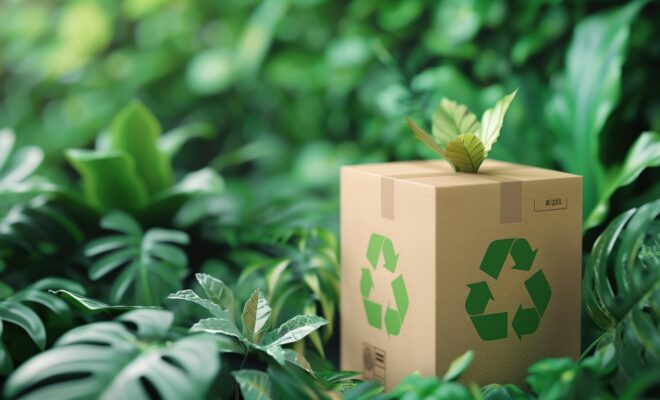The Benefits of Using Sustainable Materials in Packaging

With increasing consumer demand for eco-friendly products and packaging, brands are shifting towards more sustainable material choices. Using renewable, recycled, or biodegradable packaging offers many benefits over conventional virgin plastic and paper options. Here is a look at some of the key advantages driving this sustainable packaging transformation.
Reduced Environmental Impact
The biggest driver behind sustainable packaging is minimizing environmental damage and consumption of limited natural resources. Biodegradable materials like molded fiber pulp or polylactic acid (PLA) plastics reduce persistent litter and pollution.
Materials derived from rapidly renewing sources like mushrooms or bamboo are preferable to depleting finite resources through logging, mining, or drilling. Recycled content packages reuse existing materials instead of creating new virgin stock from scratch.
Sustainable packaging aligns with important environmental initiatives like cutting waste, preventing deforestation, reducing carbon emissions, and protecting habitats and wildlife. It is an important step towards building a more circular economy.
Lower Embodied Energy Use
Conventional packaging manufacturing generally requires more embodied energy consumption compared to sustainable alternatives. Extracting and processing raw virgin materials is incredibly energy intensive and carbon-emitting.
In contrast, recycled goods achieve significant energy savings by skipping resource extraction phases. Renewable plant-based bioplastics have a much lower carbon footprint than fossil fuel-based polymers too.
Choosing lower-impact packaging decreases overall supply chain energy use and greenhouse gas emissions. These operational efficiencies cut costs for companies while reducing their carbon footprint.
Positive Consumer Perception
Sustainability considerations strongly influence modern consumer purchasing decisions and brand loyalty. People want to support companies that make ethical, environmentally responsible choices aligning with their values.
Using eco-friendly packaging sends a powerful message that a brand prioritizes sustainable practices. It enhances brand image and bolsters reputation with growing contingents of conscious consumers. Sustainable packaged products stand out more appealingly on store shelves too.
Regulatory Compliance
Government policies worldwide are pushing for greater adoption of sustainable packaging to curb pollution and climate change. Bans are emerging on certain single-use plastics, excessive packaging, and materials slow to biodegrade.
Using renewable, recycled, biodegradable or compostable materials enables brands to stay ahead of coming regulatory changes mandating sustainable packaging. It future-proofs operations against looming fees, taxes, and penalties for non-compliance.
End-of-Life Recyclability
Even conventional packaging types like plastic and corrugated boxes can incorporate sustainable elements or qualify for easy recycling after use. Post-consumer recycled (PCR) content uses existing recycled plastics and paper instead of virgin stock.
Partnering with an EPS supplier like Epsilyte and choosing 100% recyclable expanded polystyrene foam creates a closed-loop circular model. Most municipalities accept EPS clamshells and blocks for curbside recycling too.
Recycling packaging captures value from materials instead of sending them to landfills while reducing consumption and manufacturing energy required for newly produced goods.
Setting Measurable Goals
The packaging industry’s shift to sustainability allows brands to set tangible targets for progress. They can incrementally increase the recycled content or renewable bio-based percentages in their packaging bill of materials yearly.
Many corporations establish public-facing sustainability roadmaps or net-zero emissions goals acting as benchmarks structuring waste reduction initiatives and creating accountability.
Investing in sustainable packaging development aligns with Environmental, Social and Governance (ESG) pledges for remaining profitable while prioritizing social responsibility and eco-conscious values.
Conclusion
Whether it means pivoting entirely away from plastic or incorporating more recycled content, sustainable packaging enables real, measurable progress on reducing environmental effects. It allows companies to walk the walk in sustainability rather than just talking the talk.
The benefits of transitioning to eco-friendly packaging solutions are many and far-reaching for brands, consumers and the planet. Reaping rewards in cost savings, brand reputation, and environmental stewardship makes exploring sustainable packaging alternatives a wise investment protecting our future.








